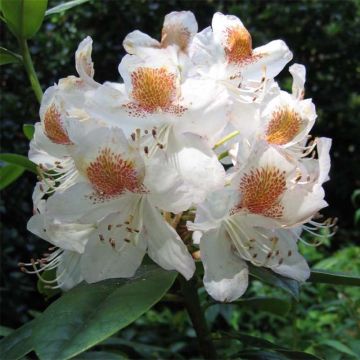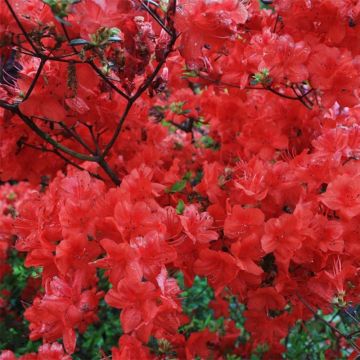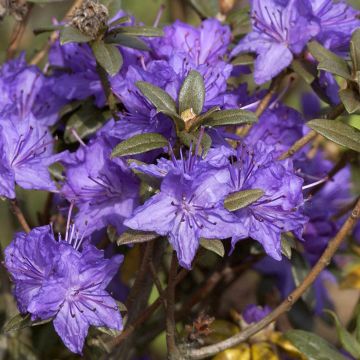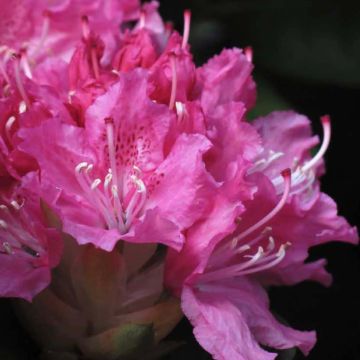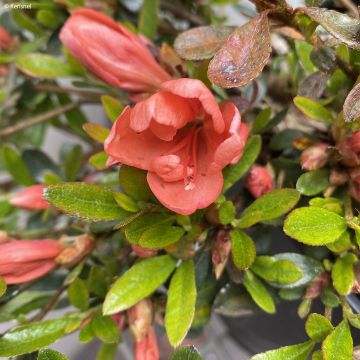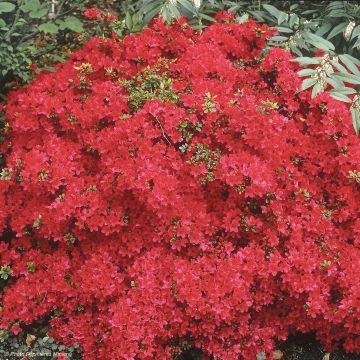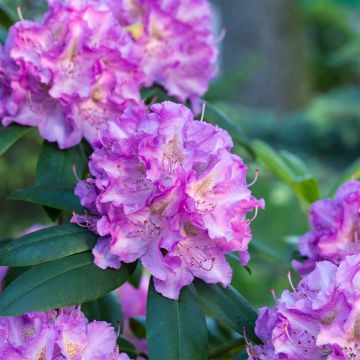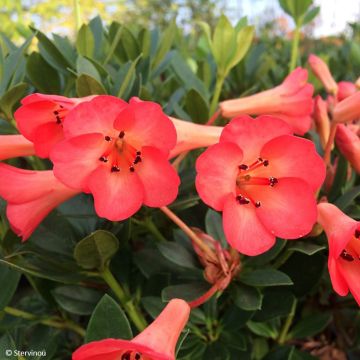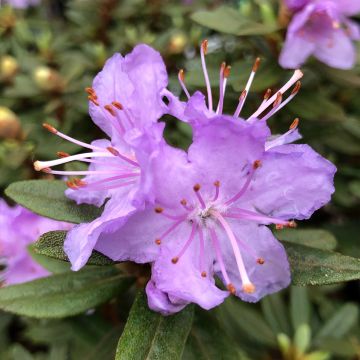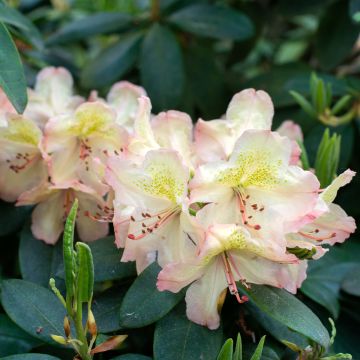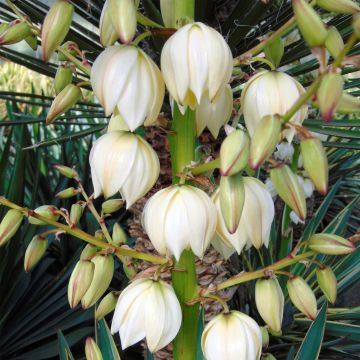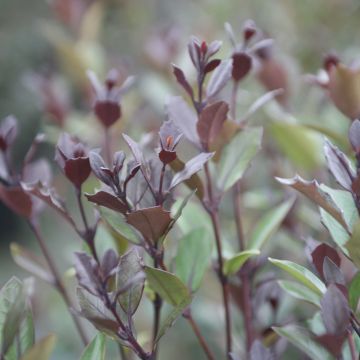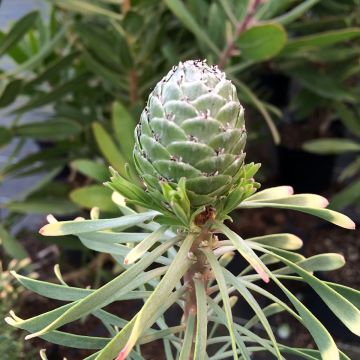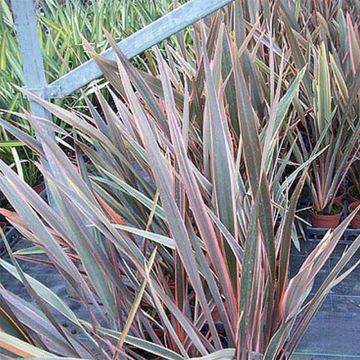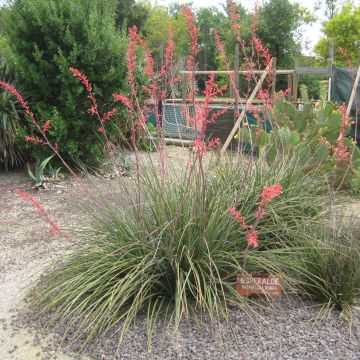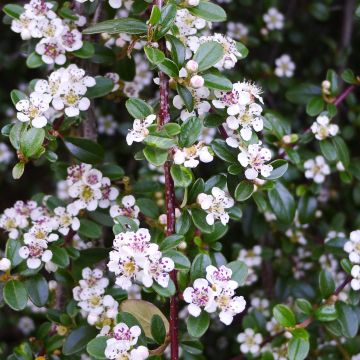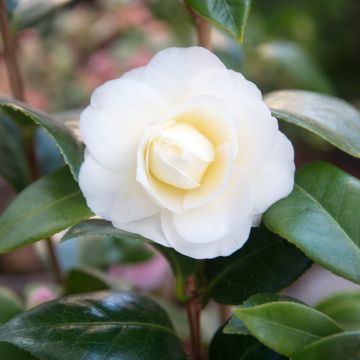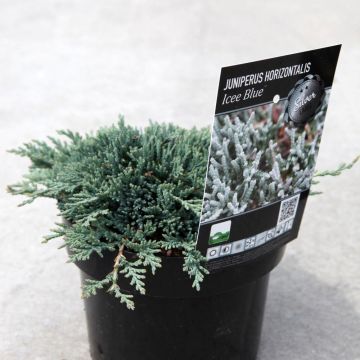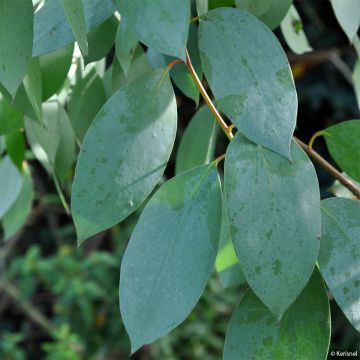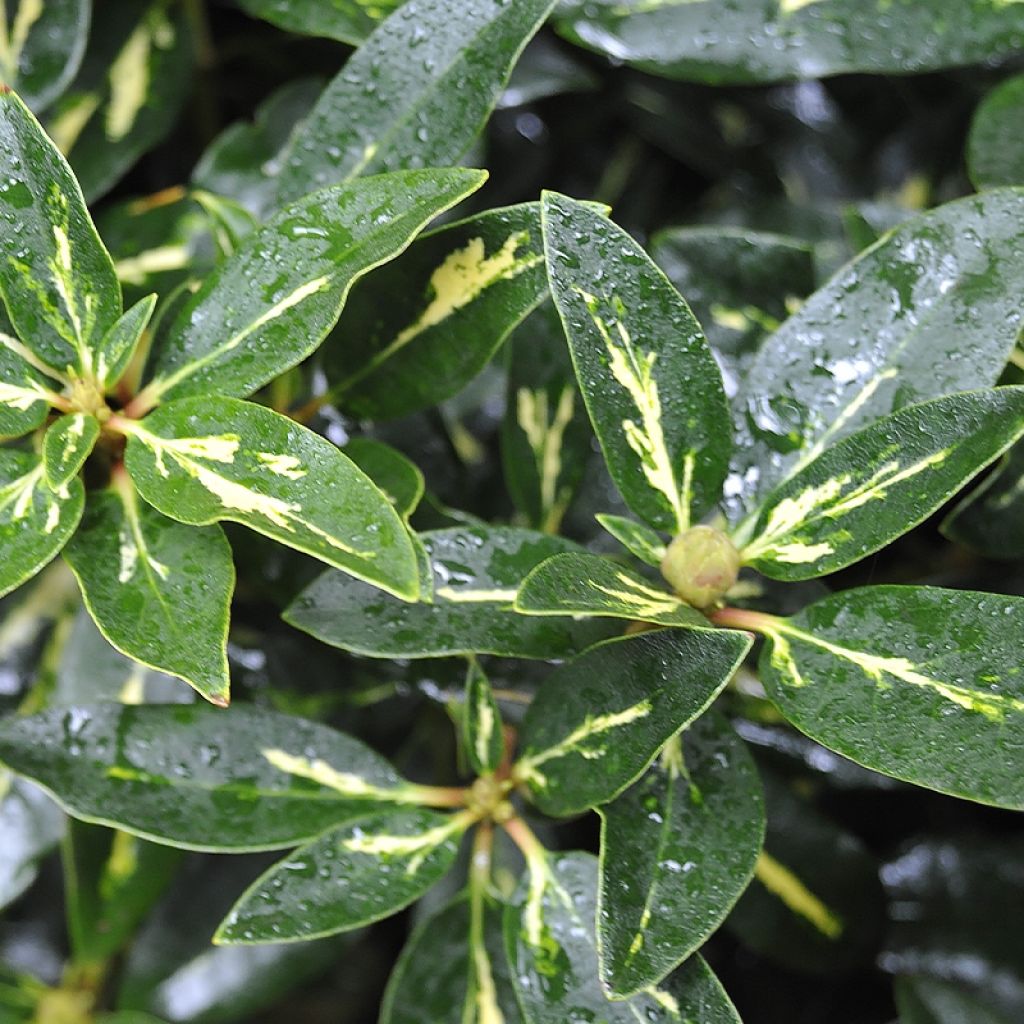

Rhododendron Goldflimmer
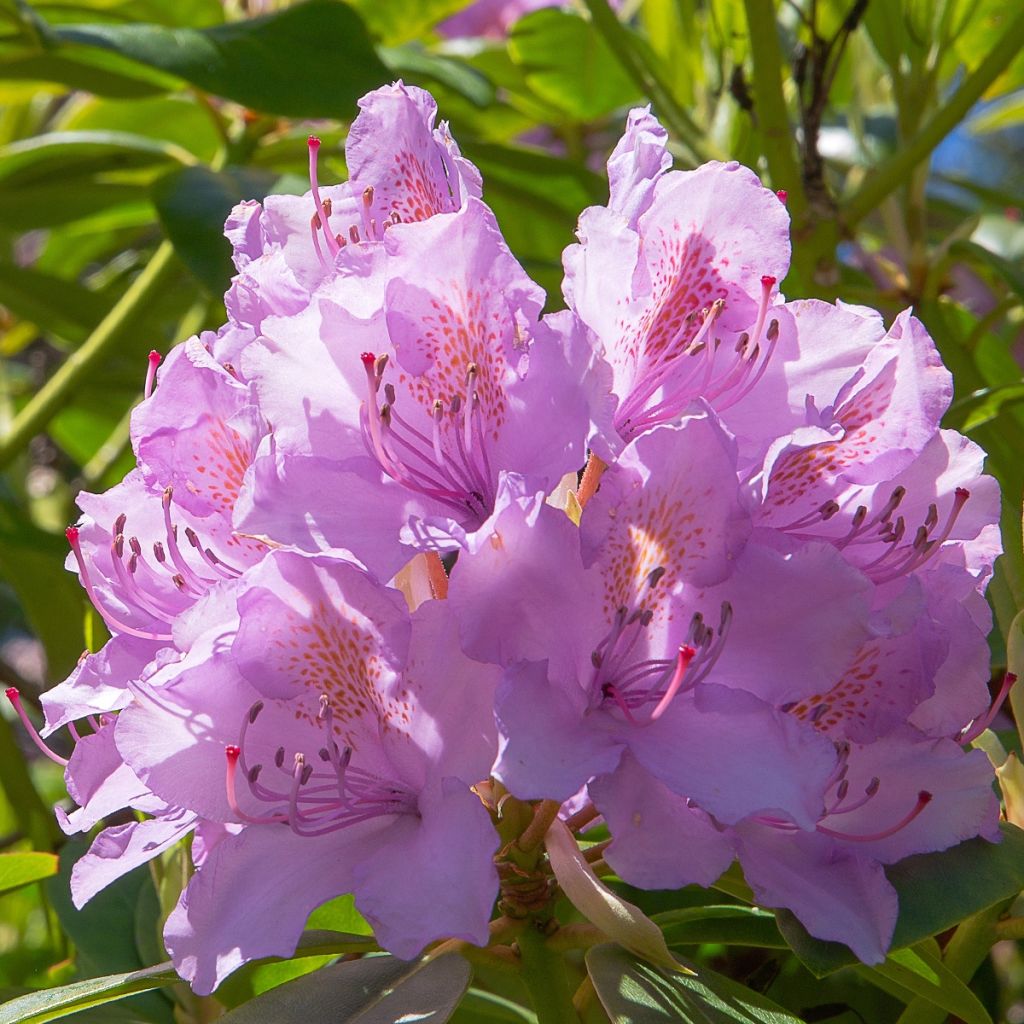

Rhododendron Goldflimmer
Rhododendron Goldflimmer
Rhododendron Goldflimmer
Rhododendron
Arrivée très bien emballée : la young plant n'a pas souffert. Très vigoureuse et correspond bien à la photo. Je suis très satisfaite.
Chantal, 28/04/2023
This item cannot be shipped to the selected country
Delivery charge from €5.90
More information
Schedule delivery date,
and select date in basket
This plant carries a 24 months recovery warranty
More information
We guarantee the quality of our plants for a full growing cycle, and will replace at our expense any plant that fails to recover under normal climatic and planting conditions.
From €5.90 for pickup delivery and €6.90 for home delivery
Express home delivery from €8.90.
Does this plant fit my garden?
Set up your Plantfit profile →
Description
Rhododendron 'Goldflimmer' is a very unique variety within the genus due to its variegated yellow foliage, which is particularly decorative all year round. In May-June, it produces an abundant and bright flowering that adds to its charm. Large clusters of mauve flowers with brown-yellow spots form at the ends of the numerous branches, attracting all attention in the garden. It is a heathland plant that is sensitive to limestone and drought. It prefers partial shade, but depending on the climate, it can be planted in full sun in the northernmost regions, as long as the soil remains moist.
Rhododendrons belong to the Ericaceae family, which provides us with numerous ornamental plants (Erica, Enkianthus, Kalmia, Zenobia, Oxydendrum...) as well as some fruit-bearing plants (Strawberry tree, Blueberry...). The Rhododendron genus is extremely vast, mainly consisting of bushes, but also including trees over 10 m (33ft) tall, generally with evergreen leaves, but sometimes deciduous, especially in Azaleas, which are, from a botanical point of view, Rhododendrons.
Rhododendron 'Goldflimmer' ('yellow glow') is a hybrid of uncertain origin, resulting from a mutation of a R. ponticum or a R. catawbiense. The plant was isolated and selected by breeder H. Hachmann, a specialist in the Rhododendron genus, in 1983. Variegated foliage is considered rare in these plants, such as the 'President Roosevelt' with pink-red flowers. 'Goldflimmer' is therefore particularly valuable in this regard. It forms a compact bush, around 1.40 m (5ft) tall with an extremely dense habit. Its evergreen foliage, varying from dark to bright green, bears a central yellow macule with irregular edges. This variegation brightens up the mass formed by the bush, especially during dark winter days. Its flowering is equally spectacular as that of other varieties. In May-June, the ends of the numerous branches see the blooming of large clusters of beautiful mauve to lilac-pink flowers, each bearing a discreet brown-yellow spot. The spectacle created by this bright flowering combined with the unique foliage is simply magnificent in late spring.
Rhododendron Goldflimmer, the quintessential heathland bush, will therefore find its place in partial shade in a moist, humus-rich, and well-drained soil with an acidic pH. Hardy to at least -20°C, it will thrive in various regions, but particularly in cool and wet climates. It can be used as a standalone specimen or in mass plantings, alongside other heath plants. You can associate it with numerous other flowering species, choosing varieties with staggered blooming periods to enjoy year-round beauty. Plant a beautiful autumn-blooming Camellia like the stunning 'Yuletide' with bright red flowers from November to January. Also, pair it with the Hamamelis (x) intermedia Westerstede with delicate yellow flowers in February-March and stunning autumn colours. The breathtaking Magnolia Emperor with its giant dark pink flowers will delight you not only in April-May but also in June-July, framing the blooming of 'Goldflimmer'. And for summer blooms, nothing beats the essential Hydrangeas...
Report an error about the product description
Rhododendron Goldflimmer in pictures
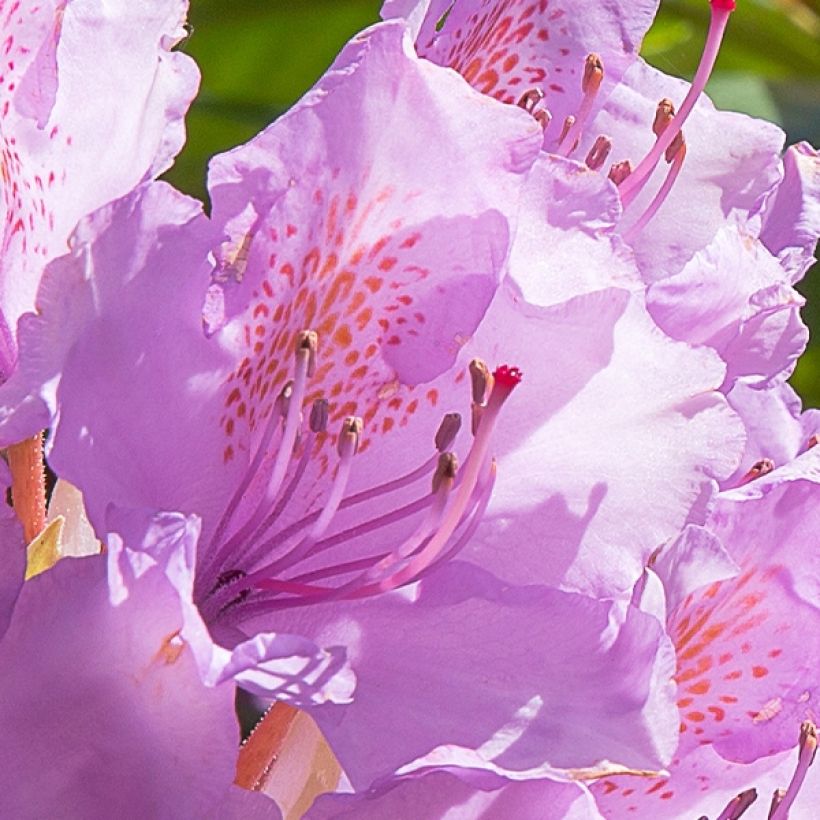

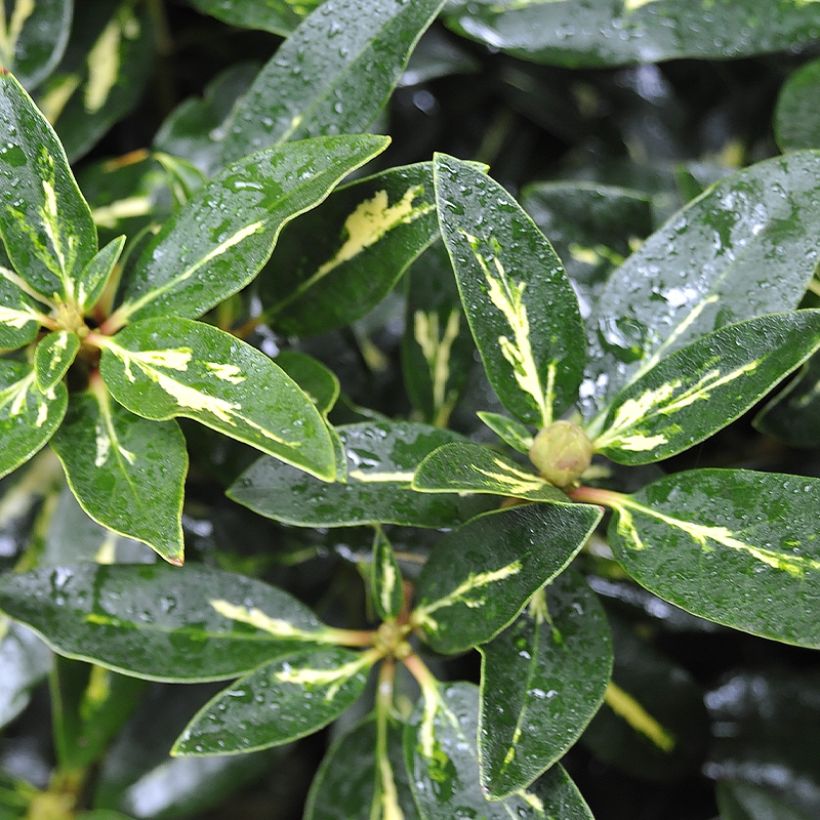

Plant habit
Flowering
Foliage
Botanical data
Rhododendron
Goldflimmer
Ericaceae
Rhododendron
Cultivar or hybrid
Other Rhododendron and Azalea
Planting and care
Plant Rhododendron 'Goldflimmer' in a semi-shaded position, protected from cold and drying winds, in a damp, humus-rich, and light soil with an acidic tendency. Like all plants in the heath family, it does not tolerate limestone soils or heavy soils saturated with water in winter. Dig a hole three times larger than the pot. Soak the root ball in non-calcareous water and plant the shrub at the level of the collar, in a mixture composed of 1/4 compost, humus, gravel or pumice, and loam. Water generously and keep the soil moist in summer.
Azaleas and Rhododendrons have a shallow and relatively limited root system. Therefore, they are sensitive to long periods of drought. That is why it is recommended to enrich the soil with humus beforehand and water abundantly with non-calcareous water during dry periods. In addition, this root system is not very strong, which is why it is essential to lighten heavy soils with draining materials (gravel, pumice, clay pellets) when planting. Apply a mulch of shredded pine bark around the base of the bush every spring to maintain soil moisture while keeping an acidic pH.
Maintenance involves removing old faded flowers in summer using pruning shears and clearing the plant of dead branches. Azaleas and Rhododendrons can sometimes be attacked by weevils that eat the edges of leaves and rootlets, as well as the infamous "rhododendron beetle" which does not often cause significant damage. Yellowing of the leaves (chlorosis) in Rhododendrons indicates poor iron assimilation in the soil and can lead to the premature death of the plant. While limestone is generally the cause, poorly-drained soil or deeply planted root balls can also explain the phenomenon.
Planting period
Intended location
Care
-
, onOrder confirmed
Reply from on Promesse de fleurs
Evergreen shrubs
Haven't found what you were looking for?
Hardiness is the lowest winter temperature a plant can endure without suffering serious damage or even dying. However, hardiness is affected by location (a sheltered area, such as a patio), protection (winter cover) and soil type (hardiness is improved by well-drained soil).

Photo Sharing Terms & Conditions
In order to encourage gardeners to interact and share their experiences, Promesse de fleurs offers various media enabling content to be uploaded onto its Site - in particular via the ‘Photo sharing’ module.
The User agrees to refrain from:
- Posting any content that is illegal, prejudicial, insulting, racist, inciteful to hatred, revisionist, contrary to public decency, that infringes on privacy or on the privacy rights of third parties, in particular the publicity rights of persons and goods, intellectual property rights, or the right to privacy.
- Submitting content on behalf of a third party;
- Impersonate the identity of a third party and/or publish any personal information about a third party;
In general, the User undertakes to refrain from any unethical behaviour.
All Content (in particular text, comments, files, images, photos, videos, creative works, etc.), which may be subject to property or intellectual property rights, image or other private rights, shall remain the property of the User, subject to the limited rights granted by the terms of the licence granted by Promesse de fleurs as stated below. Users are at liberty to publish or not to publish such Content on the Site, notably via the ‘Photo Sharing’ facility, and accept that this Content shall be made public and freely accessible, notably on the Internet.
Users further acknowledge, undertake to have ,and guarantee that they hold all necessary rights and permissions to publish such material on the Site, in particular with regard to the legislation in force pertaining to any privacy, property, intellectual property, image, or contractual rights, or rights of any other nature. By publishing such Content on the Site, Users acknowledge accepting full liability as publishers of the Content within the meaning of the law, and grant Promesse de fleurs, free of charge, an inclusive, worldwide licence for the said Content for the entire duration of its publication, including all reproduction, representation, up/downloading, displaying, performing, transmission, and storage rights.
Users also grant permission for their name to be linked to the Content and accept that this link may not always be made available.
By engaging in posting material, Users consent to their Content becoming automatically accessible on the Internet, in particular on other sites and/or blogs and/or web pages of the Promesse de fleurs site, including in particular social pages and the Promesse de fleurs catalogue.
Users may secure the removal of entrusted content free of charge by issuing a simple request via our contact form.
The flowering period indicated on our website applies to countries and regions located in USDA zone 8 (France, the United Kingdom, Ireland, the Netherlands, etc.)
It will vary according to where you live:
- In zones 9 to 10 (Italy, Spain, Greece, etc.), flowering will occur about 2 to 4 weeks earlier.
- In zones 6 to 7 (Germany, Poland, Slovenia, and lower mountainous regions), flowering will be delayed by 2 to 3 weeks.
- In zone 5 (Central Europe, Scandinavia), blooming will be delayed by 3 to 5 weeks.
In temperate climates, pruning of spring-flowering shrubs (forsythia, spireas, etc.) should be done just after flowering.
Pruning of summer-flowering shrubs (Indian Lilac, Perovskia, etc.) can be done in winter or spring.
In cold regions as well as with frost-sensitive plants, avoid pruning too early when severe frosts may still occur.
The planting period indicated on our website applies to countries and regions located in USDA zone 8 (France, United Kingdom, Ireland, Netherlands).
It will vary according to where you live:
- In Mediterranean zones (Marseille, Madrid, Milan, etc.), autumn and winter are the best planting periods.
- In continental zones (Strasbourg, Munich, Vienna, etc.), delay planting by 2 to 3 weeks in spring and bring it forward by 2 to 4 weeks in autumn.
- In mountainous regions (the Alps, Pyrenees, Carpathians, etc.), it is best to plant in late spring (May-June) or late summer (August-September).
The harvesting period indicated on our website applies to countries and regions in USDA zone 8 (France, England, Ireland, the Netherlands).
In colder areas (Scandinavia, Poland, Austria...) fruit and vegetable harvests are likely to be delayed by 3-4 weeks.
In warmer areas (Italy, Spain, Greece, etc.), harvesting will probably take place earlier, depending on weather conditions.
The sowing periods indicated on our website apply to countries and regions within USDA Zone 8 (France, UK, Ireland, Netherlands).
In colder areas (Scandinavia, Poland, Austria...), delay any outdoor sowing by 3-4 weeks, or sow under glass.
In warmer climes (Italy, Spain, Greece, etc.), bring outdoor sowing forward by a few weeks.

































